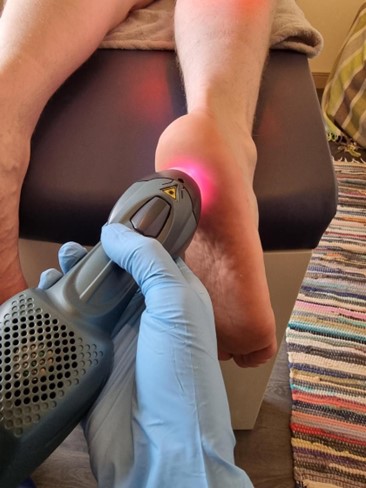In today’s blog post we’ll be answering a common question: what is Plantar Fasciitis?
With summer just around the corner, our thoughts are turning to those beach holidays with long sunset walks along the shore. Summer is certainly a time for getting out and about and having fun in the sun, but if you’re currently dealing with Plantar Fasciitis, it can really take that sparkly summertime feeling away.
With pain whether you’re resting or active, it can feel tricky to know what to do to get a little relief. But the good news is, we’re here to help you to feel more comfortable again.
Over the next few weeks we’re going to be taking a deeper look at Plantar Fasciitis to bring you our top tips on how to help prevent, treat, and get relief from this common orthopaedic issue.

So, what is Plantar Fasciitis?
In short, Plantar Fasciitis is inflammation of the plantar fascia – a part of your foot that connects your heel bone to your toes.
When this is inflamed, you’ll feel pain around the heel and arch of the foot, which may feel worse in the morning, or after resting for a long period of time.
What causes Plantar Fasciitis?
Often, it’s caused by repetitive motion or anything that puts a lot pressure on the arch of your foot. So, activities like running, jogging and walking, or consistent long periods of standing or being on your feet, can lead to Plantar Fasciitis.
You’re more likely to get it if:
- You’re an athlete – particularly runners or jumpers
- You exercise on hard surfaces
- You stand for long periods of time
- You’re wearing unsupportive footwear
- You have high-arched, or flat feet
What are the main symptoms?
Symptoms can vary from patient to patient. Some of our patients feel a duller, milder pain that they can cope with. But some patients struggle with relentless pain that really hinders their day to day activities.
The most common symptoms include:
- A dull and/or stabbing pain on the bottom of the heel
- A dull and/or stabbing pain in the arch of the foot
- A swollen heel
- Tight Achilles tendon
- Increased pain after exercise
- Increased pain after longer periods of rest
How long does it last?
Plantar Fasciitis usually resolves on its own within 6-18 months without medical treatment. However, for some people, it can become a chronic condition that requires medical intervention.
What should I do if I get Plantar Fasciitis?
Luckily, there are lots of things you can do at home to relieve your symptoms which we’ll be sharing with you in next weeks post. But one of the best things you can do is to book an appointment with your local Podiatrist. We understand how terribly painful it is, and we have treatments available to help you get back up on your feet again.
Struggling with foot pain? Contact us today to book an appointment.



